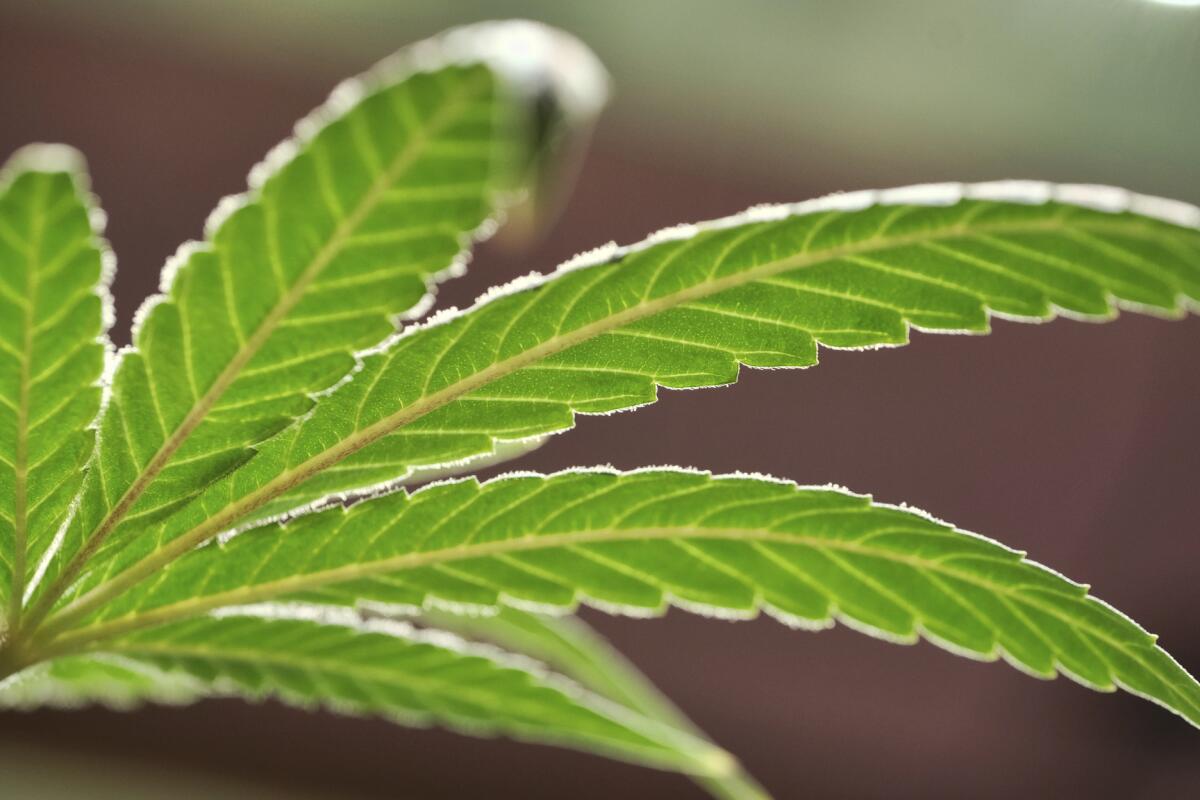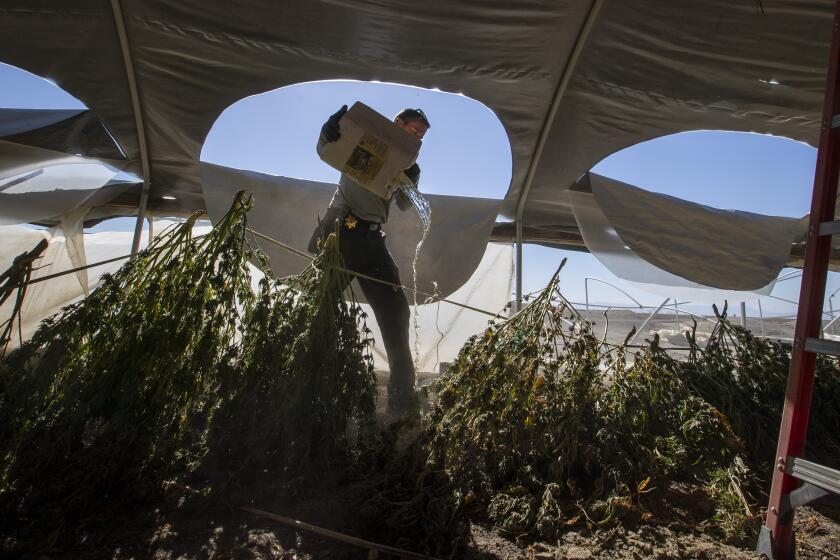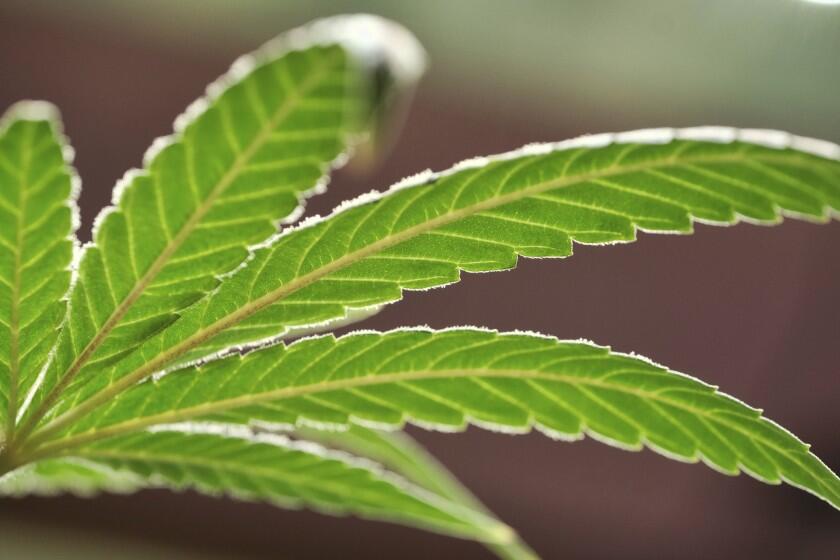Reclassifying cannabis as a Schedule III drug only exacerbates a bad situation

- Share via
For the first time in decades, there are positive signs that the overdose crisis is finally slowing. What’s behind this progress is subject to debate, but one of its likely drivers is policy reform.
Recent changes in our outdated laws have reduced barriers to life-saving drug treatment medications, improved access to the overdose antidote naloxone, and authorized other proven harm reduction measures.
For the record:
10:29 a.m. Sept. 25, 2024A previous version of this article misstated the classification of Adderall as a controlled substance. It is Schedule II, not Schedule III.
One of the most notable reforms has been the rapid scale-up in effective drug treatment behind bars. Based on out-of-step policies, millions of people are still arrested on drug possession charges in the U.S. each year. Those reentering society after a period of incarceration are up to 130 times more likely to die of an overdose than the general public. The U.S. Department of Justice and others have been filing dozens of lawsuits to compel prisons and jails to address the catastrophic risk of fatal reentry, and they have been getting impressive results. At the same time, some states have substantially reduced their reliance on arrest and incarceration as an instrument of drug control.
From California to the East Coast, cannabis markets have shut out communities and proved difficult to reform.
Despite the positive news, we are nowhere near ending the crisis. As tens of thousands continue to die of overdoses, many other drug-related problems loom. This is why the reprieve from spiraling rates of fatalities should be treated as an opportunity to do more of what is working, while dismantling antiquated policies that have been toxic to the public’s health.
The Biden administration’s recent proposal to reclassify cannabis from a Schedule I drug (alongside heroin) to Schedule III (alongside anabolic steroids) fails to meet this challenge. While this might seem like progress, it risks adding yet another chapter to the long history of misguided drug regulation in the United States.
Others have raised equity and practical concerns about this proposal. Schedule III drugs are very tightly controlled. In line with the chaotic design of American drug regulation, this category covers an incongruous assortment of medications. This classification covers ketamine as well as the lifesaving opioid treatment drug Suboxone and — perhaps most strangely — testosterone used in hormone replacement and gender-affirming care. These drugs are legal, but their possession and distribution outside of the medical context is still highly criminalized by federal and state law.
Editorial: Reclassifying marijuana is not decriminalization, but is a welcome step in that direction
Taking cannabis out of the most-dangerous-drug category is almost literally the least the federal government can do on the subject. Further work is needed to catch up with Americans’ knowledge and practice.
The broader concern is that placing cannabis into Schedule III embeds it in the deeply flawed American pharmaceutical system. This system is notorious for high costs, chronic shortages and gaping disparities. Vital medications are too often out of reach, particularly for marginalized populations.
The pharmaceutical sector’s handling of controlled substances is especially abysmal. Conceptualized during President Nixon’s “war on drugs,” the Controlled Substances Act was designed to balance access and control for “dangerous” drugs. This regulatory framework has consistently failed to strike that balance, undermining public health.
The current overdose crisis is a clear illustration of this dysfunction. Lax regulation of Schedule III opioid painkillers sparked the initial wave of overdose deaths, while barriers to pain care and addiction treatment have intensified. Recently, shortages of stimulant medications such as Adderall have further highlighted the system’s flaws in managing essential controlled medications.
California’s legal weed industry is reeling over whistleblower lawsuit claims, key departures and fear over slumping sales
The system’s defects are so profound that it cannot manage even its most basic functions. Picture Schedule III as a rudderless, aging ship taking on water. Adding cannabis is like piling a whole bunch of new cargo onto this sinking vessel.
Keeping cannabis in the controlled substances framework also ignores its diverse uses outside of healthcare. This leaves the recreational market in legal limbo — a blind spot for cultural and spiritual practices that have long been part of cannabis use.
Most tragically, the Biden administration’s current proposal is a failure of imagination. It attempts to replace one broken system with another inefficient regulatory regime, missing a critical opportunity to rethink our approach. With other Schedule I substances such as psilocybin and MDMA under consideration for rescheduling, and with marijuana use hitting record levels in recent years, there is growing urgency to build a modern regulatory structure that can steward our complex and diverse uses for psychoactive drugs into the 21st century.
Leo Beletsky is a drug policy researcher at Northeastern University and UC San Diego. Shaleen Title and Shanel Lindsay are members of the board at the Parabola Center for Law and Policy.
More to Read
A cure for the common opinion
Get thought-provoking perspectives with our weekly newsletter.
You may occasionally receive promotional content from the Los Angeles Times.











